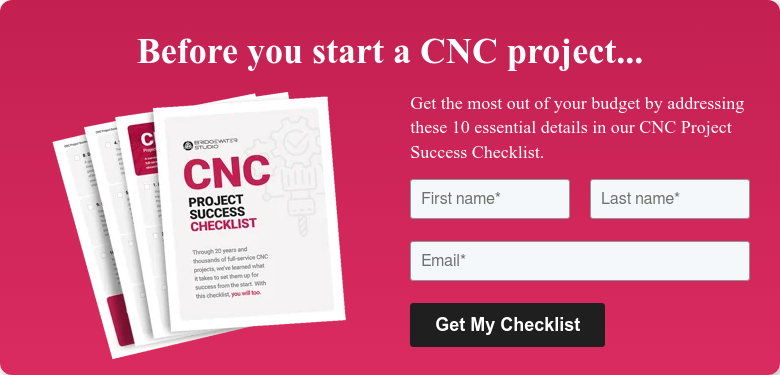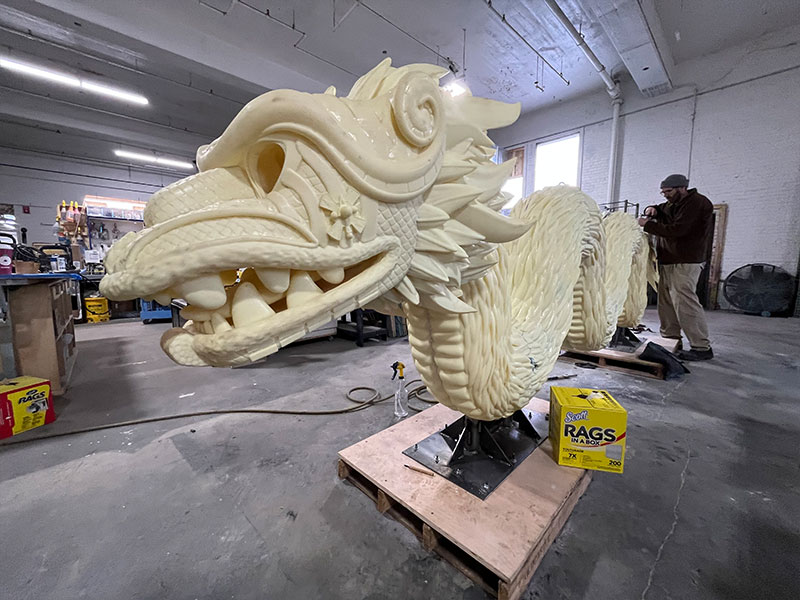Large-scale 3D printers fabricate three-dimensional objects at sizes that aren’t possible using traditional desktop 3D printers. Combining the design flexibility of computer-aided design (CAD) and 3D printing’s additive manufacturing processes, industrial 3D printers can produce high-quality objects and object parts to meet the fabrication needs of businesses across a range of industries.
You don’t have to own an industrial 3D printer to benefit from the potential of computer-aided manufacturing devices, either. You can partner with a large-scale 3D printing service to design and fabricate prototypes, samples, machine parts, sculptures, artwork, architectural design components, and other pieces.
However, not all 3D printing services use the same technology or provide the same support. How do you know which 3D printing service is the right one for your next project? In this article, we’ll explain what large-scale 3D printing is and the questions you should ask a 3D printing service to find out if they’re the right choice for your design and fabrication needs.

Large-scale 3D printing versus desktop 3D printing: What’s the difference?
The primary differences between large-scale or industrial 3D printers and desktop 3D printers are capacity, speed, and quality.
3D printing refers to a set of technologies and devices that manufacture three-dimensional objects using additive manufacturing processes. These machines follow a set of digital instructions to build items layer by layer. The exact methods and materials for each type of printer differ as do their speed and capacity.
For example, a desktop 3D printer’s maximum build volume or the size of the objects it can produce is approximately .25 cubic meters. You can use these machines to fabricate objects with widths or heights greater than 2 feet, but only by printing and assembling separate, smaller pieces.
Industrial or large-scale 3D printers can manufacture objects up to 5 times larger than a desktop printer. This capacity enables designers to build whole pieces that are a meter or higher and to assemble even larger objects using fewer separately printed pieces.
In the past few years, large-scale 3D printing technology has improved exponentially. 3D printing services using advanced machines can deliver large, detailed pieces that require less post-processing to smooth and finish than ever before.
Not every 3D printing service uses large-scale 3D printers for large-scale 3D printing projects, though. Some services use smaller machines to batch-produce small parts which are then assembled. This is like the process used to create large sculptures but on a smaller scale.
Using industrial-scale machines that reduce assembly and post-production finishing while maintaining high-quality standards allows businesses to streamline production and avoid additional steps.
Keep these different approaches to printer selection in mind when evaluating 3D design and fabrication services.
Twelve questions to ask before hiring a large-scale 3D printing service
1. Which type of 3D printing methods do you recommend for this project and why?
It’s not just the size of the 3D printer that matters. Some large-scale 3D printers can produce fast prototypes but aren’t suitable for high-detail printing. An industrial SLA printer using liquid resin is the best choice for high-detail or presentation pieces.
2. Does your organization offer design consultation services or require fully finalized CAM files?
A 3D-printed object begins as a CAD file, which is then converted into a computer-aided manufacturing (CAM) file that guides the printer’s movements.
Creating an initial design that is optimized for 3D printing will improve the stability and performance of your final product. A full-service 3D printing company should be able to guide your team to ensure that your design is optimized for 3D printing.
3. What kinds of materials can you use to construct my 3D object?
Selecting the right materials is also essential for producing objects that meet the needs of your project. Discuss the intended use of the items you’ll manufacture with prospective 3D printing services to identify the best materials to use.
4. What is your largest print volume? How many parts will you need to print and assemble to construct my project?
This question relates to the actual machines a 3D printing service will use to build your object. Will the company use large-scale, industrial printers or multiple desktop printers to deliver your project?
5. What are the time and cost limitations of our build?
Your project won’t be successful if it can’t be completed on time and within your budget. Consult with 3D printing services during your project planning stage to determine what is realistic and what factors affect cost and delivery times. An experienced team can suggest ways to improve the quality of your build or eliminate inefficiencies.
6. Is there a better method or combination of methods to produce this item?
While large-scale 3D printing presents amazing possibilities for customized fabrications, it isn’t always the best solution. Design and production studios that offer a full range in-house of fabrication services can examine your project objectives and guide you to the best combination of processes to achieve your goals.
7. Who will be responsible for the management and completion of this project?
This aim of this question is to find out who your organization will communicate with throughout the course of the project. Ideally, there should be one point of contact who will handle all questions or problems that arise. This ensures that miscommunications don’t lead to errors or derail your timeline.
8. Will your company outsource any of the production steps?
Before you engage a design and fabrication company, it’s important to know whether they are a full-service design and fabrication company or merely a project management company.
The more layers a 3D-printed object has, the finer the quality. The same cannot be said for project execution.
9. What are your policies and system for handling changes in the scope of work during the course of the project?
Companies that invest in comprehensive planning before a build are less likely to need to change course during the project. But issues may still arise. Find out how the company handles your change orders and how they’ll communicate any issues that arise during the project.
10. Can my design be replicated, modified, and scaled? How does that process work?
One advantage of digital fabrication is its flexibility. You can alter a design and view a virtual representation of the results before committing to production.
Discuss with potential 3D printing partners how this process works and when it might be beneficial for your project.
11. Can you provide a sample or benchmark part for our team to evaluate?
The answer to this question should always be yes. Don’t hire a 3D printing service without seeing what they can produce. Most companies have one or more standard files they use to produce samples.
A common sample piece used by many 3D printing services is Benchie the tugboat. This little guy provides a baseline for comparison between different printers.
12. Will any other work be required besides 3D printing in order to get my finished piece?
Aside from basic prototype pieces, few items leave the 3D printer completely ready for their close-ups.
After a piece is 3D printed, it goes through post-processing. During this step, the production team will remove extraneous printed materials such as support scaffolding, check for and smooth any rough edges and assemble separate pieces to form the planned object.
Additional steps such as adding finishing layers or color happen after post-processing. When you discuss the scope of work, be sure to clarify which post-printing steps the 3D printing service will provide. Ask them to define the deliverable for your proposed project in sufficient detail so that you know what you’ll get.
Choose a large-scale 3D design and fabrication service that delivers everything you need
Using 3D printing technology is an excellent method for producing precise, three-dimensional objects. Choosing the right partner is an essential first step. A 3D design and fabrication company with expertise across a range of tools and technologies can help you create and achieve your objectives at scale.
Find out what building big and in 3D looks like. It all starts with a Project Success Map — a free plan to detail every stage of your project from ideation to installation. Take the first step toward building big by scheduling an introduction to Bridgewater Studio today.


.png)
.png)
.png)







